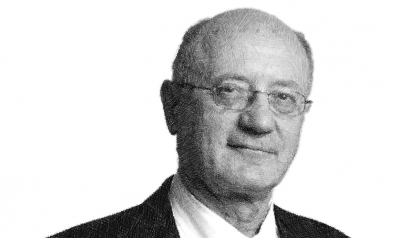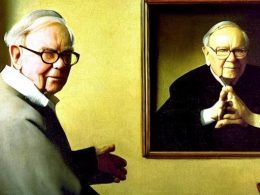by Hubert Marleau, Market Economist, Palos Management
On Thursday, the stock market advanced to another all time high even though new macroeconomic data points revealed hiccups in retail sales, industrial production and jobless claims, clearly suggesting that the pace of the recovery is slowing down. Moreover, stimulus talks remained snagged, new trade tensions with China erupted, and Covid-19 caseloads kept on rising.
The S&P 500 pulled back on Friday, falling 0.4% to 3709. Thanks to options expiration along with the forthcoming rebalancing of several indices, the dynamics on the market were complicated by the inclusion of Tesla in exchange-traded funds and indexed mutual funds that mirror the S&P 500. Given that these funds do not have reserves of cash, they can’t buy Tesla shares unless they sell other S&P stocks. The selling pressure was felt but is was not enough to defeat the overpowering bullishness of traders. The S&P 500 registered a weekly gain of 3.0%. The point is that investors are looking past near term headwinds because they believe in the positive effects of dual-vaccine rollouts, ultra-easy monetary accommodation and an imminent
$900bn fiscal package. On Sunday, U.S.lawmakers reached a compromise, clearing the path for passing the holdup relief bill.
Last Wednesday, the Federal Reserve revised upward its projections for economic growth, employment and inflation. Yet, they remained committed to keep the Fed’s bond buying program at $120 billion a month until they absolutely assured that improvements in these broad economic indicators prove to be meaningful and sustainable. Meanwhile, the Fed’s officials believe that there will be no need to raise the policy rate until 2024. Effectively, the faster than anticipated improvement in the economy implies that the neutral rate of interest will rise. Acknowledging that the Fed is not likely to not match the anticipated increase with higher policy rates, it suggests that the monetary stance will become more accommodating as we go along. And, yet financial conditions are easy as it gets. The Goldman Sachs Financial Condition Index gauges financial conditions below 98 and as the easiest in 30 years. As a matter of fact, the banking system has been a major source of strength. The Federal Reserve has just given the Bank of America, Citigroup, Goldman Sachs, JPMorgan Chase and Wells Fargo a green light to resume share buybacks and pay more dividends.
And all of this is happening when big increases in money supply are occurring all-over the globe and the greenback is falling. Thus, the dollar value of the world money supply is constantly rising by leaps and bound. It's now up $16.7 trillion from the financial crisis low and $12.9 trillion from the pre-pandemic high. What is particularly interesting is that the world supply of money is not only filling the pandemic hole but maintaining an elevated growth rate. In the past year, it is up 18.1% and running at the annualized rate of 18.2% over the last three months. Accordingly, various markets are manifesting conviction in the Fed’s intent to keep things “nice and loose” through 2023. Unsurprisingly, the U.S. Dollar Index (DXY) sunk below 90 for the first time since 2018, inflationary expectations finally reached 2.00% and commodity prices shot up.
The Fed Model
At Wednesday's press conference, Fed Chairman, Jerome Powell, made a stunning reference to the so-called Fed Model, which compares the S&P 500’s earnings yield to riskless government bond yields. It's not standard for a Fed chair to engage in this type of exercise. He posited that because risk-free rates are so low, stocks, which may look overvalued by some measures, are perhaps not as expensive as they appear. “Admittedly P/Es are high, but that’s maybe not as relevant in a world where we think the 10-year Treasury is going to be lower than it’s been historically from a return perspective, '' he openly said. The Fed model is often cited by equity strategists and economists to justify current equity valuations. Bloomberg in its Weekly Fix wrote that, “Currently, the S&P 500’s earning yield--profit relative to share price--is about 2.5 percentage points higher than benchmark Treasury yields, implying that stocks are attractive to bonds. At the height of the dot-com bubble of the late 1990’s, the measure fell below -3 percentage points as 10-year Treasury yields flirted with 7%. Currently, they clock in at around 0.92%.”
The Stock Market Outlook
In this connection, I’m not astonished that Barron’s recent survey of 10 market strategists and chief investment officers presented, as a group, a bullish outlook for 2021. The Barrons wrote, “Averaging their year-end S&P 500 forecasts, which range from 3800 to 4400, the group expects the index to rise some 9% next year, to about 4040. Add a dividend yield of around 2.00%, and
U.S. stocks could return a 10% to 11%.” In a broader survey conducted by Jim Bianco, the average Wall Street S&P 500 earnings for 2021 is $170, that’s about 25% higher than in 2020. Assuming that the aforementioned EPS estimate is right, ten-year Treasury yield would have to rapidly increase above 1.50% to obstruct the forecast.
The Food Inflation Risk
It should be noted that there are always circuit breakers that can hinder an investment playbook. At this time, none are more dangerous than food prices. It's not only an excellent predictor of future inflation but also of social unrest. Food scarcity can be a very scary affair. History shows that surging food prices can instigate political upheaval. The US Census Bureau’s Household pulse Survey shows that 30 million people don't have enough to eat--starving. Looking at the Rogers International Commodities Agricultural Index, food prices may have inflected up in 2020. The United Nations’ food agency pointed last week that food prices rose for six months in a row, touching a six-year high and breaking a ten-year bear-trend. Thus, it will become increasingly important for investors to closely watch with trepidation if the lingering disruptions in agricultural supply chains will bring a surge in food prices.
P.S. I’m Taking A Break Over The Holiday Season. The Next Weekly Letter Is Due January 9, 2021.
The Shifting Factors Of Production in a Post Covid World
The Preface
Over the past few decades, the western economies have been characterized by falling inflation, rising employment and declining productivity. After the pandemic, the course of the economy will profoundly change. We are about to enter a new era of rising productivity, increasing inflation and declining employment growth. In other words, the long-term N-GDP growth will be very different from that of the past. There are signs of structural changes in our society where the old elite is being replaced by a new and younger elite which will likely be much more adventurous politically and business wise.
Firstly, we are in the midst of a major demographic reversal. The cohort of people of working age will be negatively affected by the slowdown in population growth and the reduced willingness of working-age people to join the labour force. Secondly, artificial intelligence, robotics, blockchain and digitalization are rapidly diffusing throughout the world. Thirdly, gross income and wealth inequality will revise and reset fiscal and monetary policies in highly inflationary ways that were inconceivable by the older elites.
The Changing Elite
Professor Turchin at the University of Connecticut has introduced the idea of cliodynamics as a polymathic effort to give the study of social and political history a sense of scientific rigour. My interpretation of his work is that the asset-rich and highly educated boomers who have all the glamorous jobs, are increasingly confronting tremendous pressure from an overabundance of young people who are also highly educated and rich. These younger aspirants who want elite positions in governments, large companies, universities and Wall Street are putting up a hard fight to push the antediluvians out and take their elite positions. Hence the political turmoil. The millenials believe that it is a fixable issue. They're applying political pressure to replace the boomers in order to involve themselves more decidedly in the academic-industrial-government complex. Professor Turchin’s social mathematics argues that we are in the middle of this structural demographic change. A phenomenon which should bring about a major cultural and societal reset which will transform the investment, financial, and economic landscape.
One area which seems to have lost its original meaning is “what is a libertarian”. Libertarianism is about free choice--but not between good and evil but between two goods. In other words, it should not conflict “rights” with “common sense”. Free choice comes with responsibility. Unfortunately, this noble idea has been hijacked by politicians, pundits, bloggers, critics and the media. Yet, it created a movement to restore civic responsibility which believes, rightly or wrongly, that it can only be achieved by reducing extreme wealth and unjust income inequalities. This will bring on the one hand a lot of government interventions in the profit objectives of corporations (ESG) and reforms in the privacy of individuals (cyber security) and on the other hand money independence and secrecy through the use of bitcoins to transact business.
We now have a growing belief that Milton Friedman was wrong on what is the main duty of the corporation. In a NYT article he wrote in 1970 that the objective of business was to increase its profit. Fifty years later, it does not hold any longer, even though his then objective was to give a clear objective, and simple answer to what a corporation was all about. Now the libertarian idea is being twisted around to demonstrate that shareholders are no longer shareholders but stakeholders. Incredibly, those companies who have the ESG stamps do better in the marketplace.
Inflation Will Come Back
Technological Disruptions Will Boost Productivity: Demographics Will Lower Population Replacement: To be continued...















